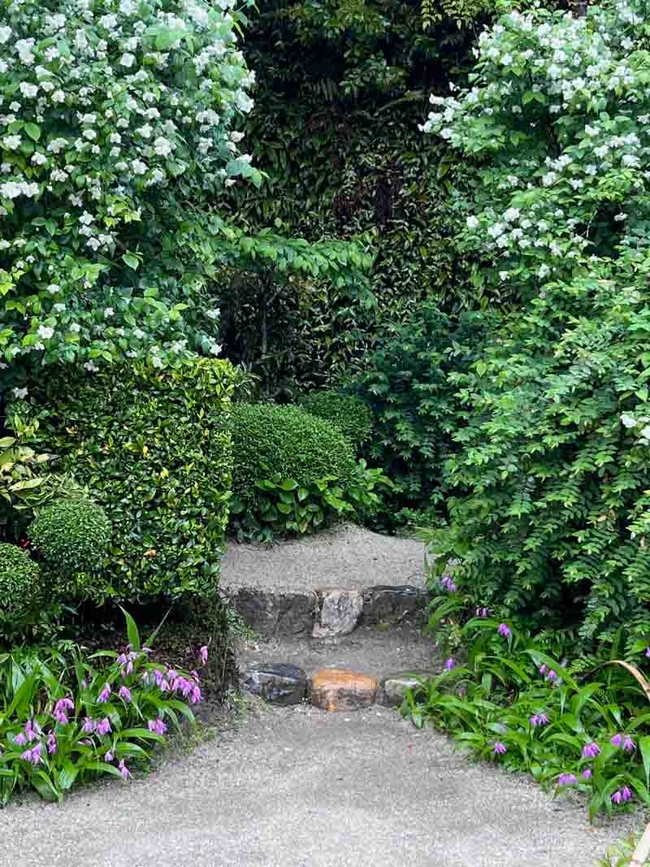“The fundamental chemistry of combustion lies at the core of the living world. When it happens within a cell it's called respiration. When it happens outside organisms, it's called fire.” (Stephen Pyne, NOVA)
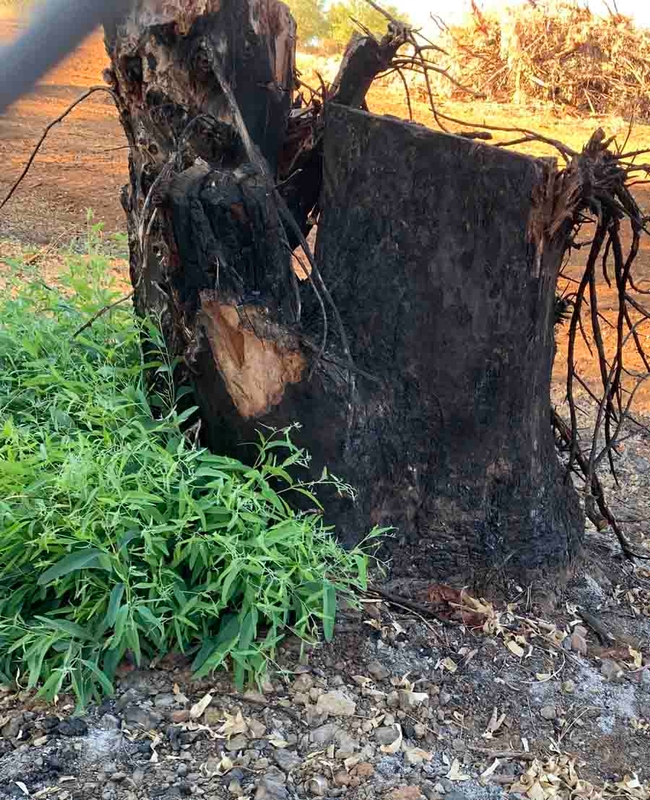
In one example of resistance, ponderosa pines shed their lower branches as they mature. This strategy prevents lower branches from becoming ladder fuel, thereby protecting the branches and needles higher up on the trees. Most mature trees have fire-resistant bark from two to four inches thick which insulates the inner tissues from heat (similar to the way Nomex or Kevlar suits protect firefighters). It might seem counterintuitive, but South African aloes and Australian grass trees retain dense dead leaves around their stems; the dead matter acts as insulation against the heat.
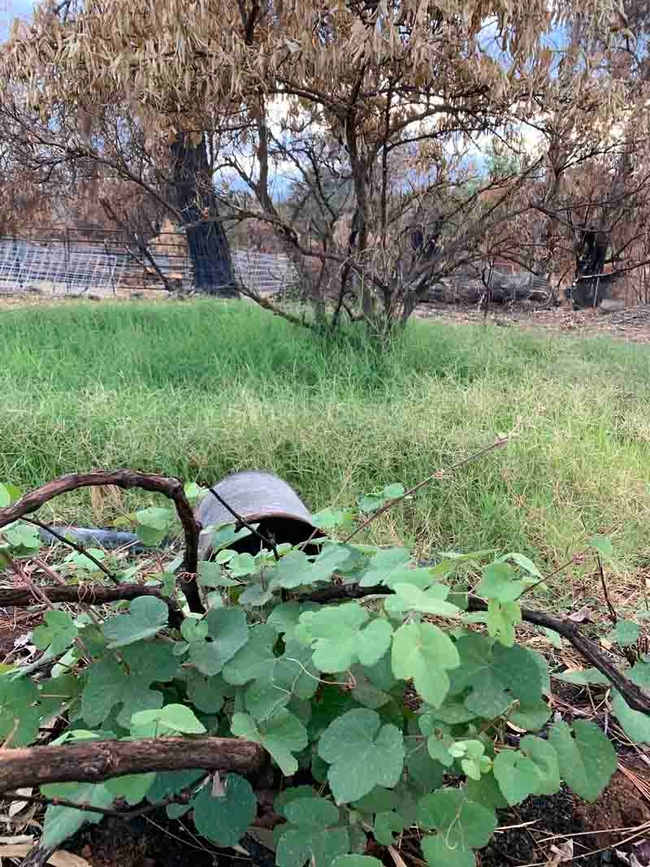
In recruitment strategies, seed dispersal is triggered by fire instead of by natural maturation. This process is known as serotiny. An example of serotiny is the Jack pine: In the heat of a fire, immature pine cones open and release small, brown, hard-shelled seeds. You can observe this phenomenon by tossing a young pine cone into a campfire and watching as it opens and releases its seeds. Conifer survival is enhanced with a higher germination rate than other plants due to thermal scarification (the breaking or softening of the seed shell, which facilitates germination).
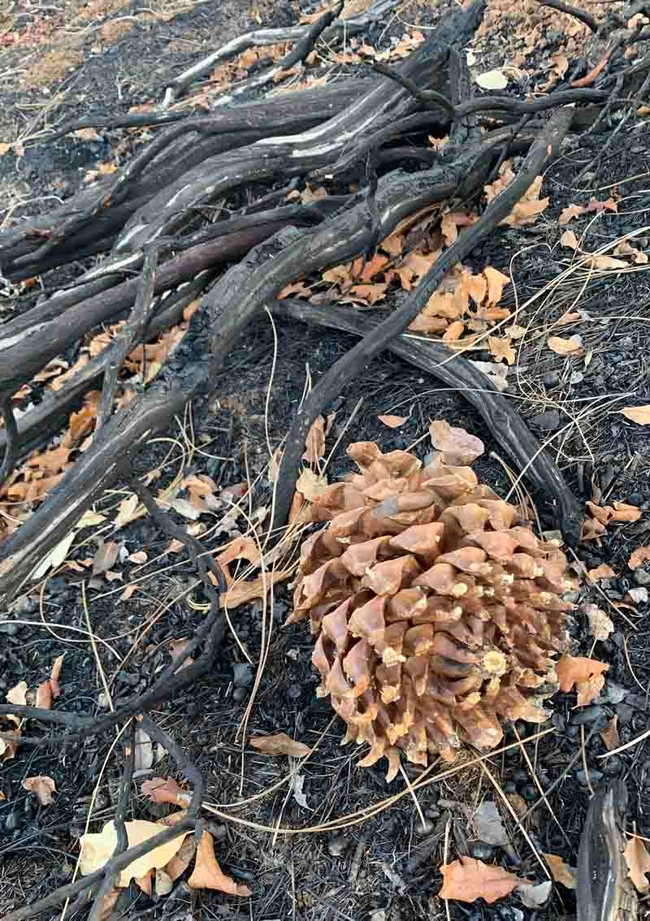
Many other plants that have evolved in fire-prone landscapes actually need fire in order to propagate. Heath can wait up to two years after a fire to germinate. The germination of yellow rock rose is triggered by smoke. In experiments the germination rate of sugar bush increased from one in ten seeds to nine in ten after being submerged in boiling water while kept dry in waterproof bags. Lodgepole pine depends on fire to melt the resin that surrounds its seeds so they can be released. The acacia tree “recruits” ants to carry its resinous seeds underground where they can then germinate after a fire.
Another form of recruitment is pyrogenic flowering, found in plants that have adapted to periodic fires by increasing their rate of flowering after a fire event. In this situation, fire actually facilitates and accelerates flowering and seed development. Plants and new sprouts get an extra benefit because fire creates an environment that has increased light due to decreased tree canopy; soil amendments and nutrients from ash; and greater opportunity for birds, bees, and winds to carry seeds to bare earth. Fireweed and the grass tree have particularly impressive floral displays after a fire.
In our area, and in chapparal and forest ecosystems in general, landscapes have received periodic fire for thousands of years, and the plants that thrive here have evolved to withstand or even rely on it. But fire is disastrous if your home is located in the path of one, as many of us have experienced. Regular prescribed or controlled burning at the proper time of year can control the size and intensity of future unplanned fires as well as result in greater germination rates.
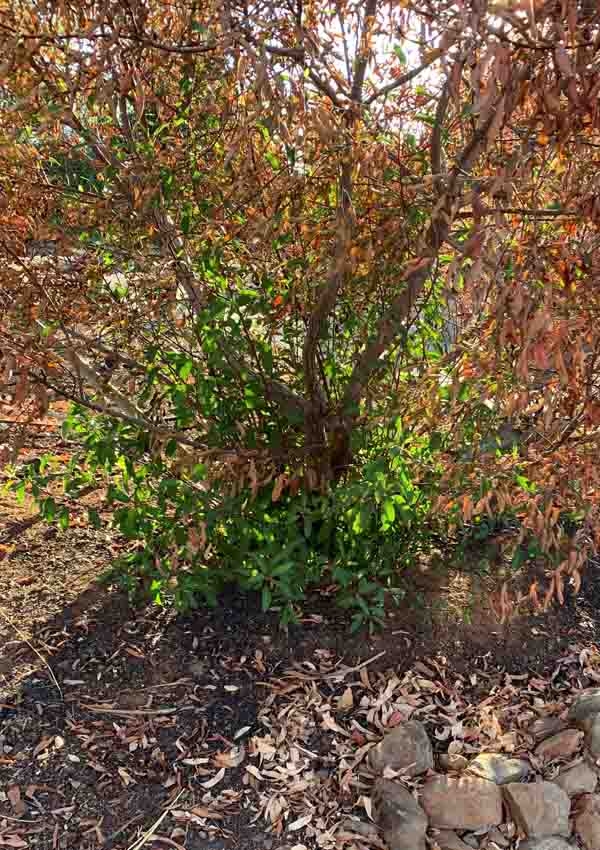
In many ways, plants have developed strategies to live with and even win over fires! Overcoming the disadvantage of not being able to run away, plants have evolved ways to use fire to survive, multiply, and thrive. Hopefully humans will do so as well.
For more information on this topic, see the following references, used in writing this article:
NOVA Online | Fire Wars | How Plants Use Fire | PBS
Andrew C. Scott, et al, Fire on Earth: An Introduction (2014).
Improving California's Forest Health | Our Strategies | CAL FIRE
UC Master Gardeners of Butte County are part of the University of California Cooperative Extension (UCCE) system. To learn more about us and our upcoming events, and for help with gardening in our area visit our website. If you have a gardening question or problem, email the Hotline at mgbutte@ucanr.edu or leave a phone message on our Hotline at 530-552-5812. To speak to a Master Gardener about a gardening issue, or to drop by the MG office during Hotline hours, see the most current information on our Ask Us section of our website.
The past two columns in this space have focused on the formal gardens of Kyoto, and some ideas that can be borrowed from them for use in our own home gardens. But what about the average urban dweller in Japan? What kind of relationship to plants and gardening do most people have when they live in a tightly congested urban area?
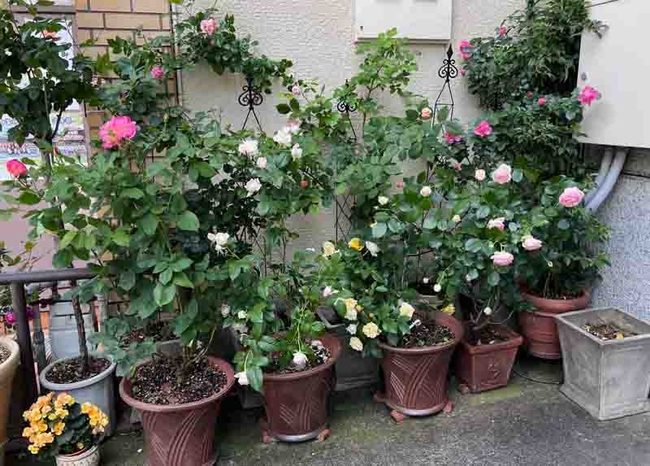
Simply walking the streets of Kyoto one is treated to a vibrant demonstration of its residents' love of gardening. On display are a variety of plants cultivated in pots and grouped to create beauty in the limited space of a porch or stairway. Shrubs grown in containers are placed to form hedges shielding a home's entrance from street traffic, or to create a space for parking bicycles.

The main message is that no matter how small an outdoor area one might have, gardening can take place. The lack of ground soil to plant in is no barrier because so much can be accomplished by planting in containers.
Much of Japan is in a climate equivalent to U.S. Hardiness Zone 6b, where the average minimum temperature falls to 5 to 10 degrees below zero Fahrenheit, as opposed to the zones 8 and 9 of Butte County, in which our lowest winter temperatures generally fall between 20 and 25 degrees above zero Fahrenheit (10 to 15 degrees in the higher regions of areas like Magalia). This means that Japan has a temperate climate with four distinct seasons, with a relatively short growing period in spring and summer, so gardeners must make the most of the warmer months.
And yet, surprisingly, a stroll around Kyoto in May reveals many plants that are very familiar to gardeners here in our Mediterranean climate: roses, brunfelsia pauciflora (commonly known here as “yesterday, today & tomorrow”), ferns, pelargoniums, pansies, and many more.

Planning a trip to Kyoto? American expatriate and Kyoto resident Judith Clancy has published a number of useful and informative travel guides to the region, including Kyoto City of Zen; Kyoto Gardens; and Exploring Kyoto: On Foot in the Ancient Capital.
UC Master Gardeners of Butte County are part of the University of California Cooperative Extension (UCCE) system. To learn more about us and our upcoming events, and for help with gardening in our area visit our website. If you have a gardening question or problem, email the Hotline at mgbutte@ucanr.edu or leave a phone message on our Hotline at 530-552-5812. To speak to a Master Gardener about a gardening issue, or to drop by the MG office during Hotline hours, see the most current information on our Ask Us section of our website.
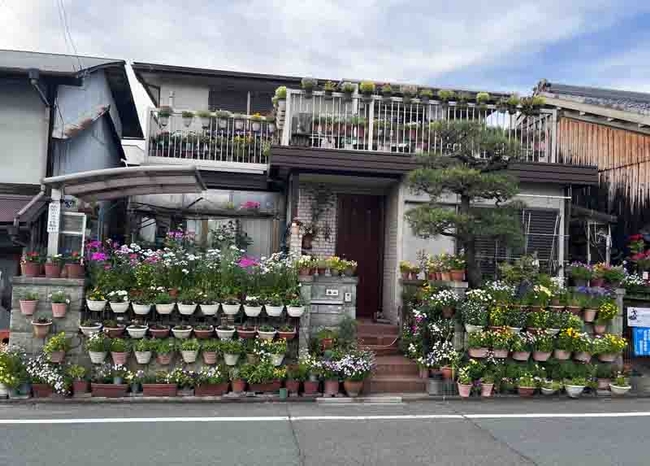

There is a lot to learn from the long, venerable tradition of gardening in Japan, a point made in last week's Real Dirt, which focused on the history and meaning of Japanese gardens. Indeed, in Kyoto alone there are more than 50 temple and palace gardens, each one full of potential inspiration for the home gardener. Here are some takeaways:
- Frame a view. Dry gardens of sand, rocks, and minimal plant matter, are meant to be viewed, and contemplated, from inside a temple building; its broad wall openings frame the view. Why not apply this idea by using the architecture of your own home (windows, French doors) to frame a composition in the garden outside?
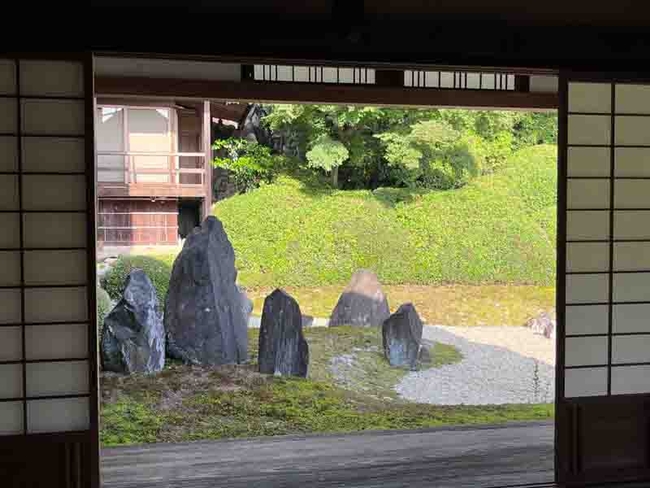 Garden scene framed by building doorway at Komyo-in temple, Kyoto. J.C. Lawrence
Garden scene framed by building doorway at Komyo-in temple, Kyoto. J.C. Lawrence
- “Borrow” scenery. Often the view of a surrounding hillside or natural feature will be incorporated into a Japanese garden, essentially expanding the “garden” beyond its own boundaries. If your neighbor has a beautiful tree, for example, you could prune some of your own shrubs to include a view of it in your garden (especially if their tree has beautiful spring blossoms or fall foliage).
- An all-green garden can be beautiful and interesting, as well as restful. Consider planting evergreens of various shades of green, with textural interest from different plant heights and a variety of leaf shapes and configurations. When a nearby flowering tree blossoms (like a cherry tree in spring) it will stand out all the more against its green backdrop; the same can be true of deciduous trees with beautiful fall leaf color.
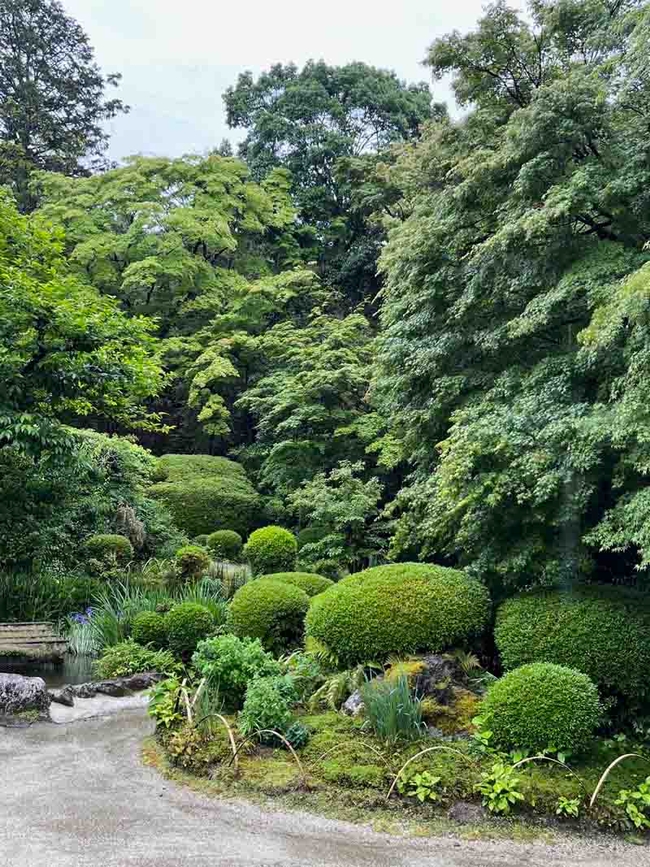 Many shades of green create a peaceful scene at Shisen-do garden in Kyoto. J.C. Lawrence
Many shades of green create a peaceful scene at Shisen-do garden in Kyoto. J.C. Lawrence
- A garden doesn't have to have plants in it! A dry garden can contain multitudes – the idea that the vast (even the whole world) can be represented in the small, controlled space of a garden is not unique to Zen Buddhism, but is often used as a guiding principle in Japanese dry gardens, where rocks can represent mountains, and raked sand the sea (as the saying goes, “the earth in a grain of sand; the sea in a drop of water”).
- Make room for rocks (and other natural materials). And consider how the sun will fall on them at different times of day and in different seasons of the year.
- Incorporate the principle of “shin-gyo-so”: the use of formal, less formal, and informal materials together. This is often seen in paths and walls. For example, carefully cut and shaped blocks of granite (formal) might border a path composed of river rock (natural, informal), or formal stepping stones might be arranged in an informal pattern, so the effect is one of semi-formality.
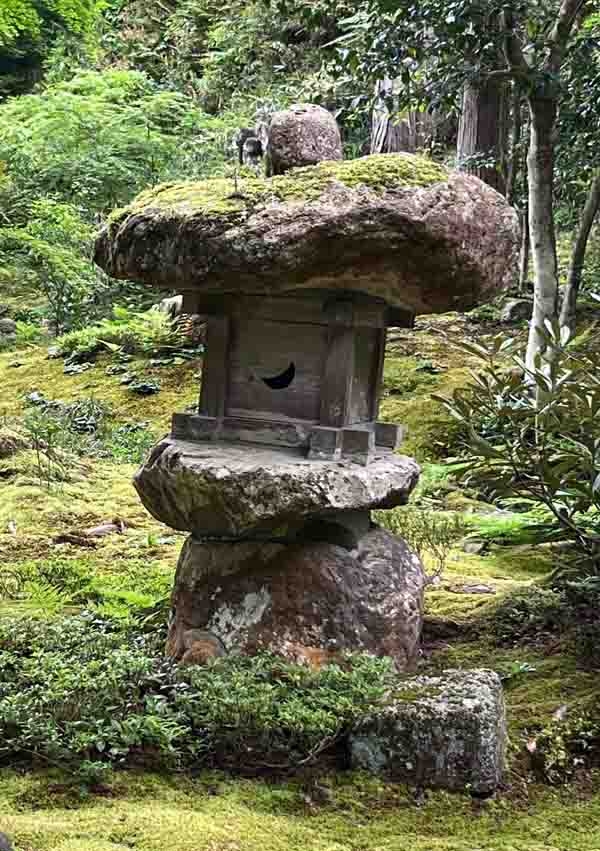 Stone lantern amid the moss at Sanzen-in garden in Ohara, northern Kyoto. J.C. Lawrence
Stone lantern amid the moss at Sanzen-in garden in Ohara, northern Kyoto. J.C. Lawrence
- Make a statement with one large piece of sculpture. The stone lanterns seen in many Japanese gardens are used primarily as sculptural elements and rarely as functioning lights.
- Use color sparingly. Large swaths of the same color are more soothing to the eye than a jumble of bright colors.
- Take care of your evergreens. Careful pruning and shaping can create a truly stunning work of living sculpture.
- Consider shadow and light. If sunlight coming through the leaves of your tree casts shadows on a walkway, deck, or window covering, rejoice in that beauty.
- Re-use old materials in new ways. The Japanese word for this is “mitate” and this principle is seen, for example, in the use of old roofing tiles to make a pathway.
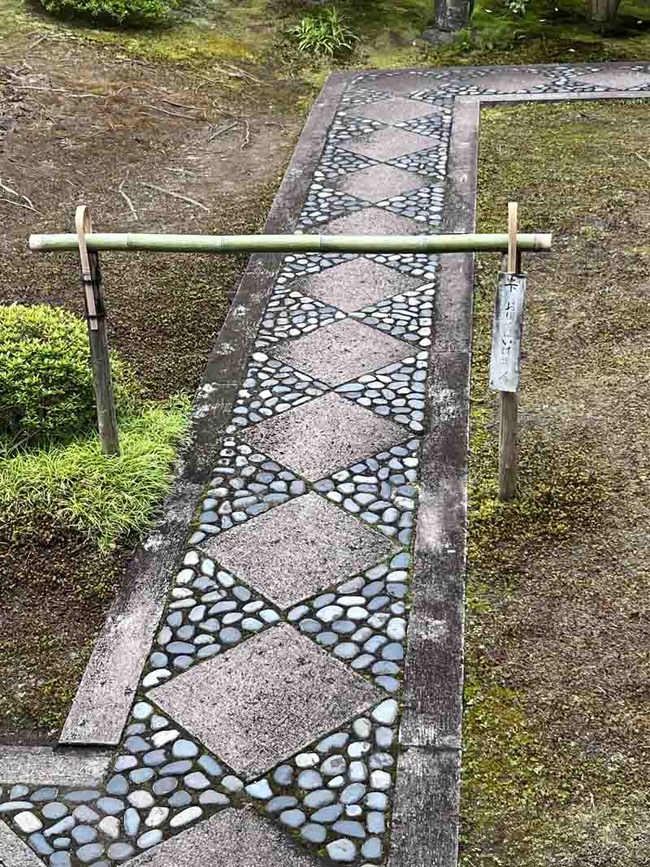 This pathway at Ryogen-in garden in Kyoto demonstrates the principle of combining more formal and less formal elements. J.C. Lawrence
This pathway at Ryogen-in garden in Kyoto demonstrates the principle of combining more formal and less formal elements. J.C. Lawrence
- Hide and reveal: place a particular plant or garden feature around a curve in a path, or on the other side of a large shrub, so that turning a corner presents the garden visitor with something previously unseen and unexpected to appreciate.
For much more on this topic, see Marc Peter Keane, Japanese Garden Design (2016). For an American woman's personal account of working in Japan's male-dominated gardening culture (though that is changing) see Leslie Buck, Cutting Back: My Apprenticeship in the Gardens of Kyoto (2017).
Why not visit a Japanese garden closer to home than Kyoto? There are several in California, including the Shinzen Friendship Garden in Fresno; the Storrier Stearns Japanese Garden in Pasadena; SuihoEn, a Japanese Garden in Van Nuys and, of course, the Japanese Tea Garden in San Francisco's Golden Gate Park. If you are traveling to Oregon or Washington, there are fine examples in Portland (Portland Japanese Garden) and Seattle (Seattle Japanese Garden).
Want to learn about garden design in general? Attend our two-part workshop on Landscape Design (Nov. 7 & 14), part of the Master Gardeners' Fall 2024 Workshop Series. For more information, and to register, visit our website.
UC Master Gardeners of Butte County are part of the University of California Cooperative Extension (UCCE) system. To learn more about us and our upcoming events, and for help with gardening in our area visit our website. If you have a gardening question or problem, email the Hotline at mgbutte@ucanr.edu or leave a phone message on our Hotline at 530-552-5812. To speak to a Master Gardener about a gardening issue, or to drop by the MG office during Hotline hours, see the most current information on our Ask Us section of our website.
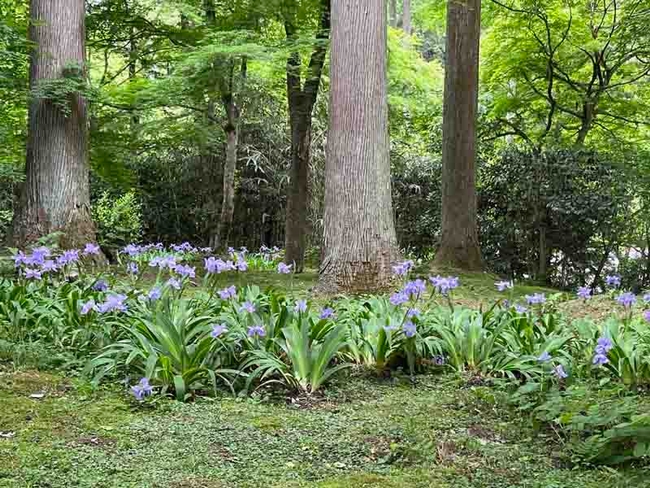
Looking for some garden inspiration? Let's do some “armchair travelling” across the Pacific to one of the world's loveliest places for garden viewing: Kyoto, Japan.

The balance between nature and man-made beauty as a guiding principle of all Japanese gardens goes back to prehistoric times. And the belief that certain stones, waterfalls, ponds, and giant trees were sacred had long been a part of Japanese culture and its native Shinto religion. But in the late 700s a confluence of events led to the first formal aristocratic gardens in Japan.
The idea of the garden as an art form was introduced by craftsmen from China and Korea at the same time that Kyoto (Heian-Kyo) became the capital city of the Japanese islands. By this time several schools of Buddhism, also arriving from Korea, had been established, bringing with them ideas about the natural world that would become incorporated in the formal gardens of Japanese nobles. For example, the placement of one large rock surrounded by several smaller ones to symbolize the mountains that are a primary geographical feature of Japan. Or the creation of a pond with a small island situated in its midst to symbolize the “pure land” where enlightened spirits go when they die, ending the otherwise constant cycle of death and rebirth.

The Gardens of Zen Buddhism: The dry gardens associated with Japan arose with the influence of Zen Buddhism. The Mongol invasion of China in the early 1200s forced many Chinese priests to flee to Japan, bringing with them Zen Buddhism, with its emphasis on meditation as the path to self-enlightenment. In Japan, the powerful warrior class (Shogunate) had taken control away from the nobles, and the “middle way” (no fear, no desire) and self-reliant aspects of Zen Buddhism appealed to these new rulers. The gardens of warrior residences and Zen temples in cities became enclosed, inward-looking, austere landscapes, often referencing images from Chinese literature that expressed themes of Zen Buddhism. There was also a rising merchant class, with smaller properties, that favored less expansive gardens for reflection and contemplation rather than exploration.

In the late 1500s and 1600s, the drinking of tea became elevated into an artform in Japan – another aristocratic practice that appealed to the warrior class as well as the merchant class. The ceremony of drinking tea in a rustic hut was an act of simplicity and humility, approached via a series of thresholds through which one progressively cast-off worldly cares and pressures.
Tea Gardens were, in effect, corridors leading to simple, grass-roofed tea houses. Stepping stones, small gates representing thresholds, and stone lanterns were integral to their design; lining the path would be evergreen trees and shrubs, and perhaps a few deciduous trees for fall color. Flowering trees or shrubs, annuals, and perennials were rarely incorporated, if at all, because their call for attention would compete with the goal of austerity. The aesthetic experience of tea culture is a good example of the term “wabi-sabi” in action: the appreciation of the patina that simple, common materials achieve with use and age.

Of course, it is unlikely that any of us have the acreage or desire to create an elaborate stroll garden, or the need for a separate tea house. But there are many lessons to be learned from these gardens. For a start, the garden elements we choose can have deeper meanings and associations. Hardscaping and garden plants can be employed to create a mood, or to encourage one to slow down and look closely. The view of the garden from one's windows can be just as important as experiencing it outside. A beautiful garden doesn't necessarily have to have a lot of blooming flowers – there are many, many shades of green!

The source for this article is Marc Peter Keane, Japanese Garden Design (Tuttle Publishing, 2016). Highly recommended!
Want to learn about garden design in general? Attend our free workshop on Landscape Design, part of the Master Gardeners' Fall 2024 Workshop Series. For more information, and to register, visit our website.
UC Master Gardeners of Butte County are part of the University of California Cooperative Extension (UCCE) system. To learn more about us and our upcoming events, and for help with gardening in our area visit our website. If you have a gardening question or problem, email the Hotline at mgbutte@ucanr.edu or leave a phone message on our Hotline at 530-552-5812. To speak to a Master Gardener about a gardening issue, or to drop by the MG office during Hotline hours, see the most current information on our Ask Us section of our website.
It's not too soon to start thinking about fall garden clean-up. As days begin to shorten and temperatures begin to cool (fingers crossed!), the pace of gardening slows along with plant growth. But there is still plenty to be done during the fall and winter months. In fact, much of what is done in the garden in October and November will set the tone for the following year.
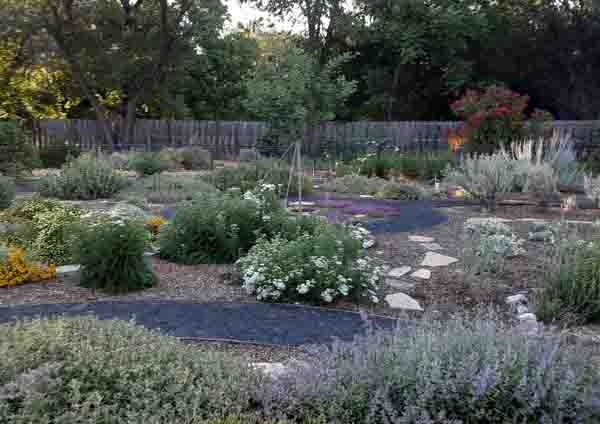
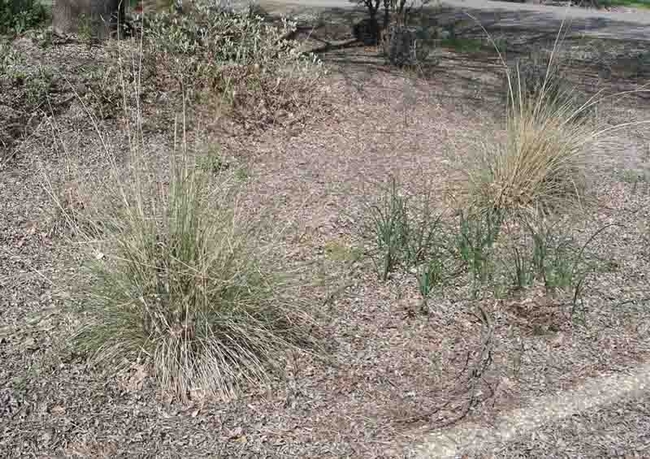
Consider planting a winter garden. Radish, spinach, pea and onion seeds can be planted in October or November. Cauliflower, broccoli, lettuce and turnip seedlings can be planted in November. If you don't want a winter garden, clean up your summer garden and mulch it with straw, grass clippings or chopped leaves. Mulch will discourage weeds and provide soil nutrients for next year's garden.
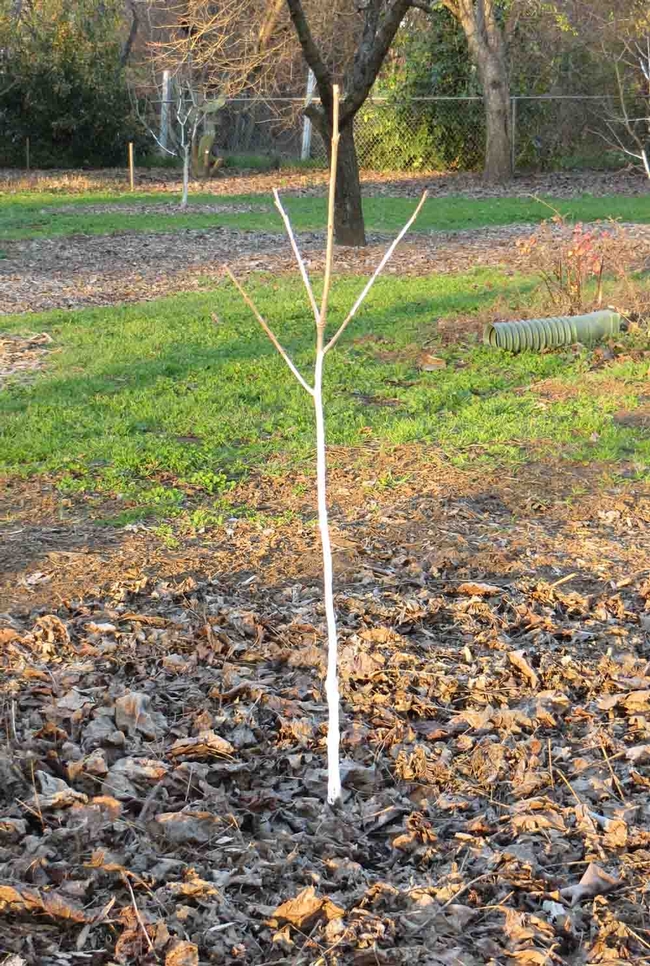
Planting bare root trees and shrubs during their winter dormancy allows healthy root systems to develop before budding out in the spring. Fall is also the time to plant bulbs and perennials. Squirrels can notice disturbed soil and may dig up tulips and other bulbs. Disguise your work by flooding the soil surface with water and then covering the soil with mulch.
Renovate garden beds by weeding, adding organic matter, and tilling the soil to a depth of at least six inches. Refresh existing mulch around established plantings.
Conduct an irrigation review and adjust your watering schedule to reflect the lower water requirements of fall and winter. Make any repairs (such as fixing broken pipes, hoses, or damaged sprinkler heads) before spring. If you have an automatic system, be sure it is operating correctly.
If you plan to create new garden beds, fall is a good time to do it before you are faced with the rush of spring gardening jobs. And if you plan on creating a new bed in an existing lawn area, a good method is to cover it with a thick layer of newspaper topped with a layer of mulch. This will kill the lawn (as long as it's not a dormant perennial like Bermuda grass) and the bed will be ready to be worked in early spring without the effort of manually removing the sod.
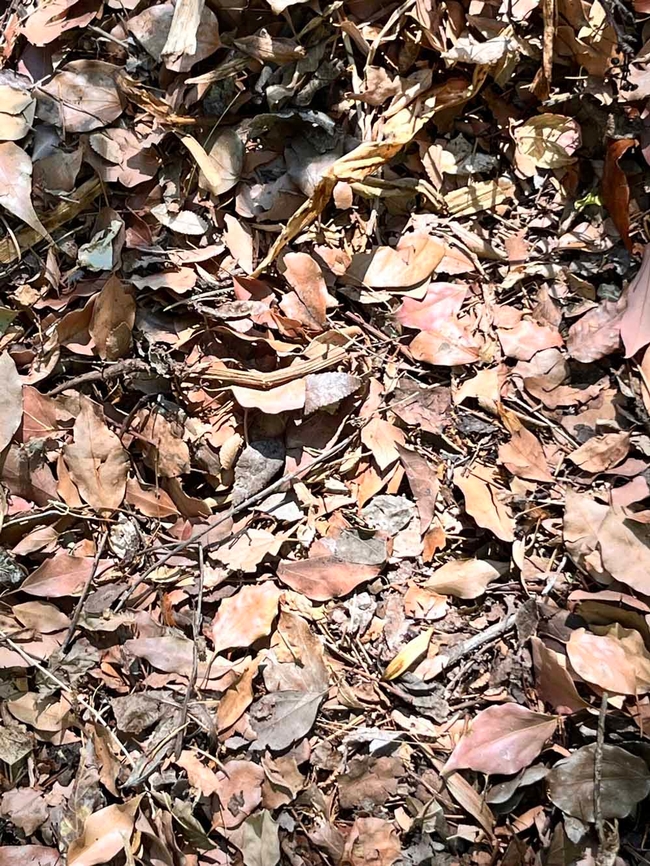
Want to be sure you make the most of the fall and winter months in your garden? Attend our free workshop, “It's A Wrap! Autumn Garden Clean-up, Winter Prep, and Preservation” on October 19th, part of the Master Gardeners' Fall 2024 Workshop Series. For more information, and to register, visit our website.
UC Master Gardeners of Butte County are part of the University of California Cooperative Extension (UCCE) system. To learn more about us and our upcoming events, and for help with gardening in our area visit our website. If you have a gardening question or problem, email the Hotline at mgbutte@ucanr.edu or leave a phone message on our Hotline at 530-552-5812. To speak to a Master Gardener about a gardening issue, or to drop by the MG office during Hotline hours, see the most current information on our Ask Us section of our website.

